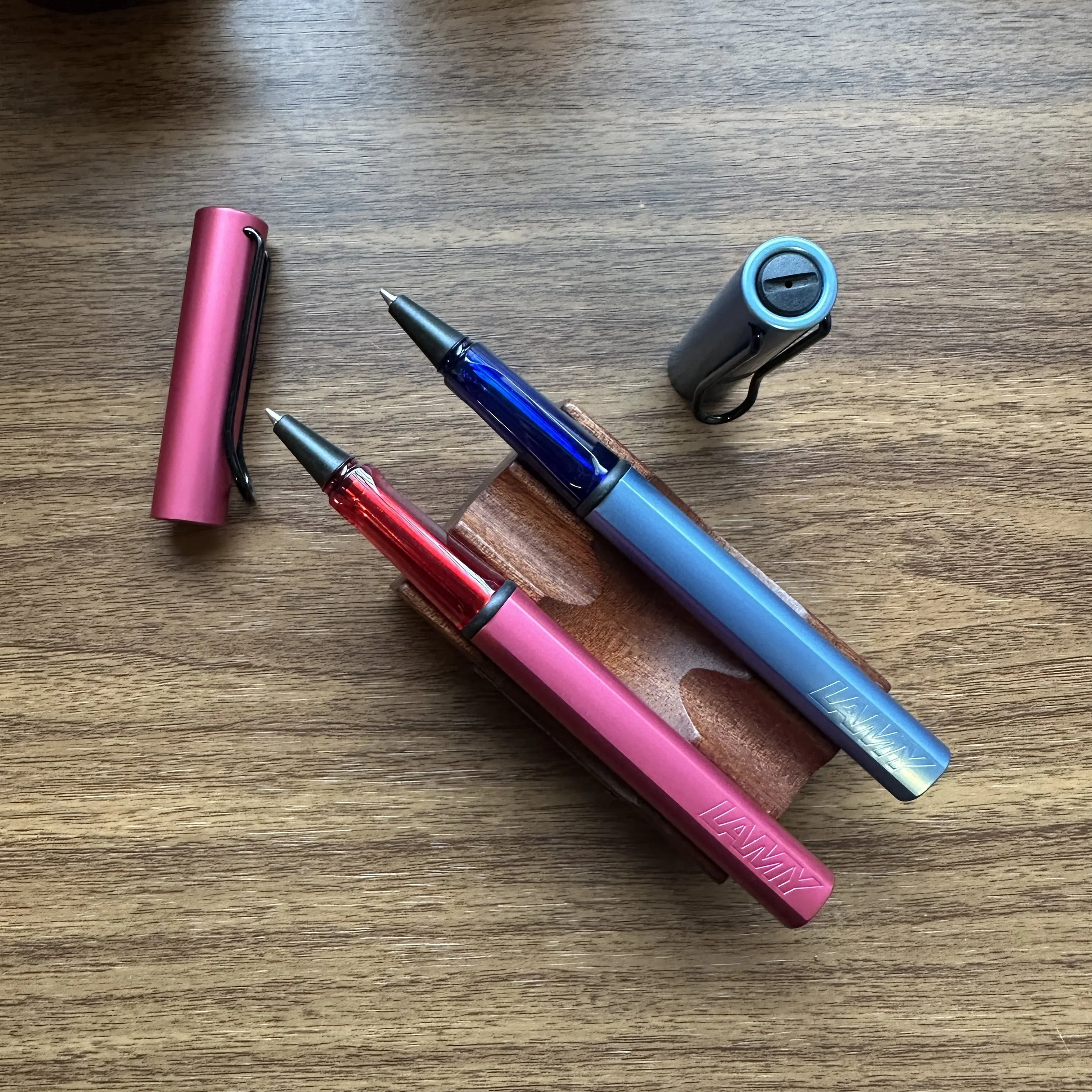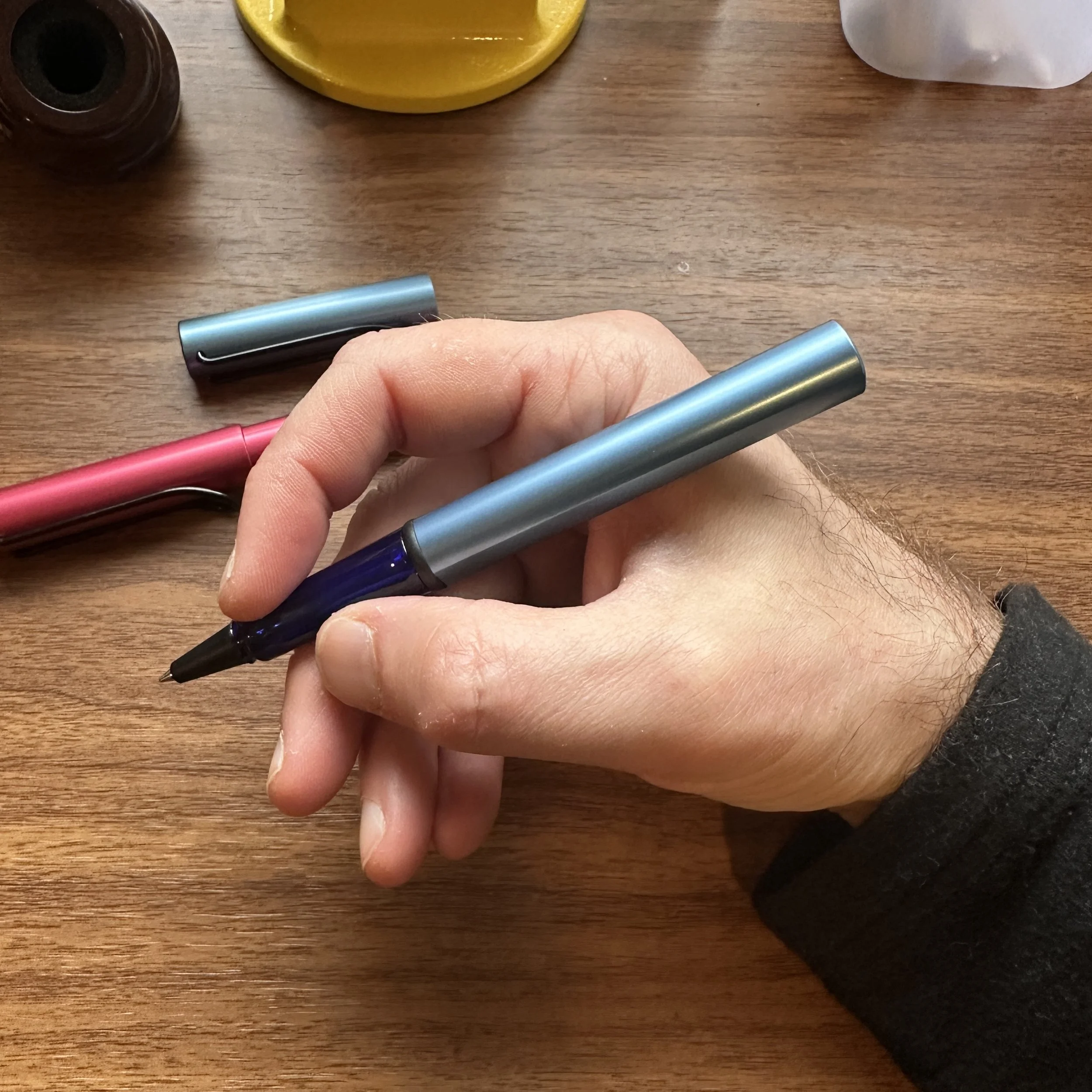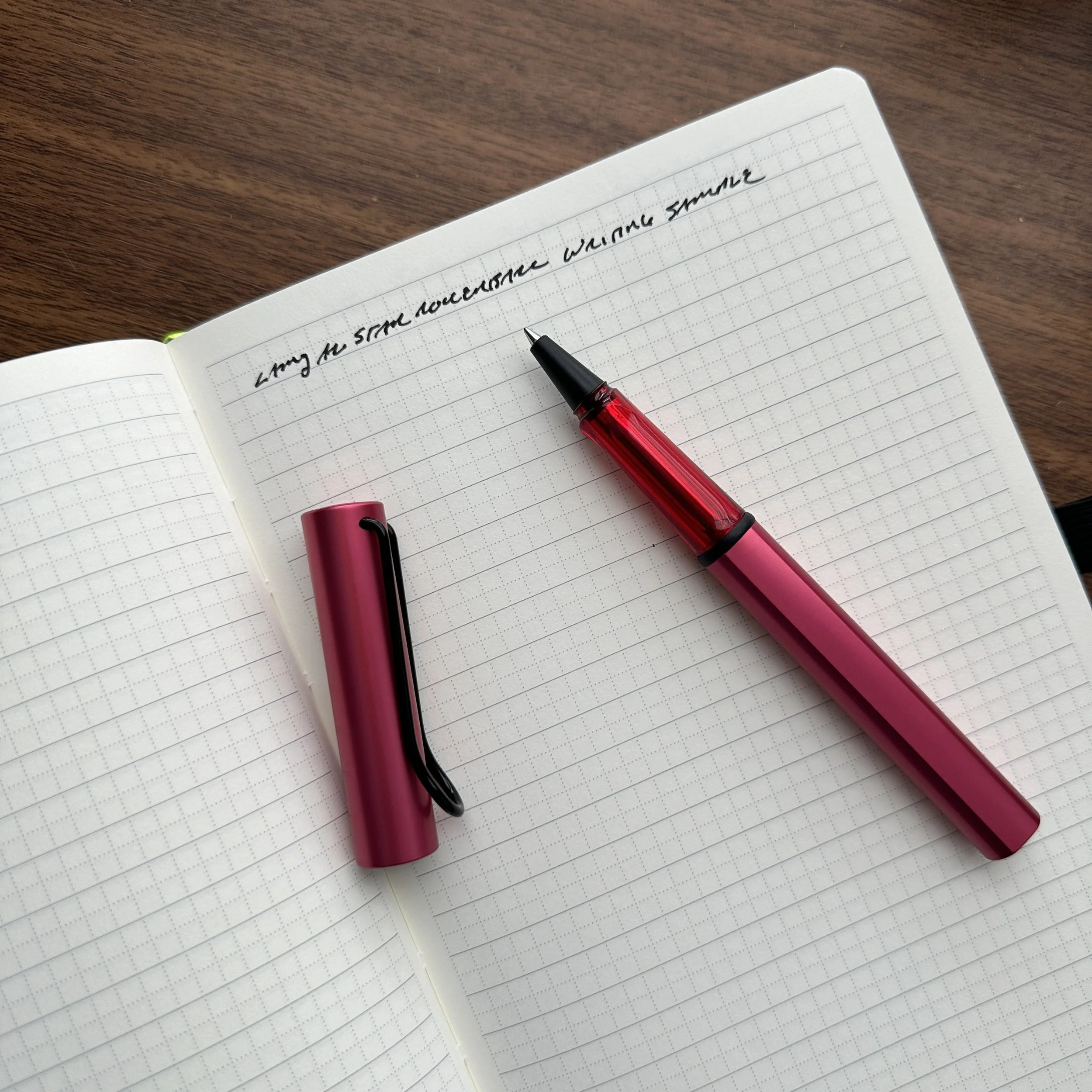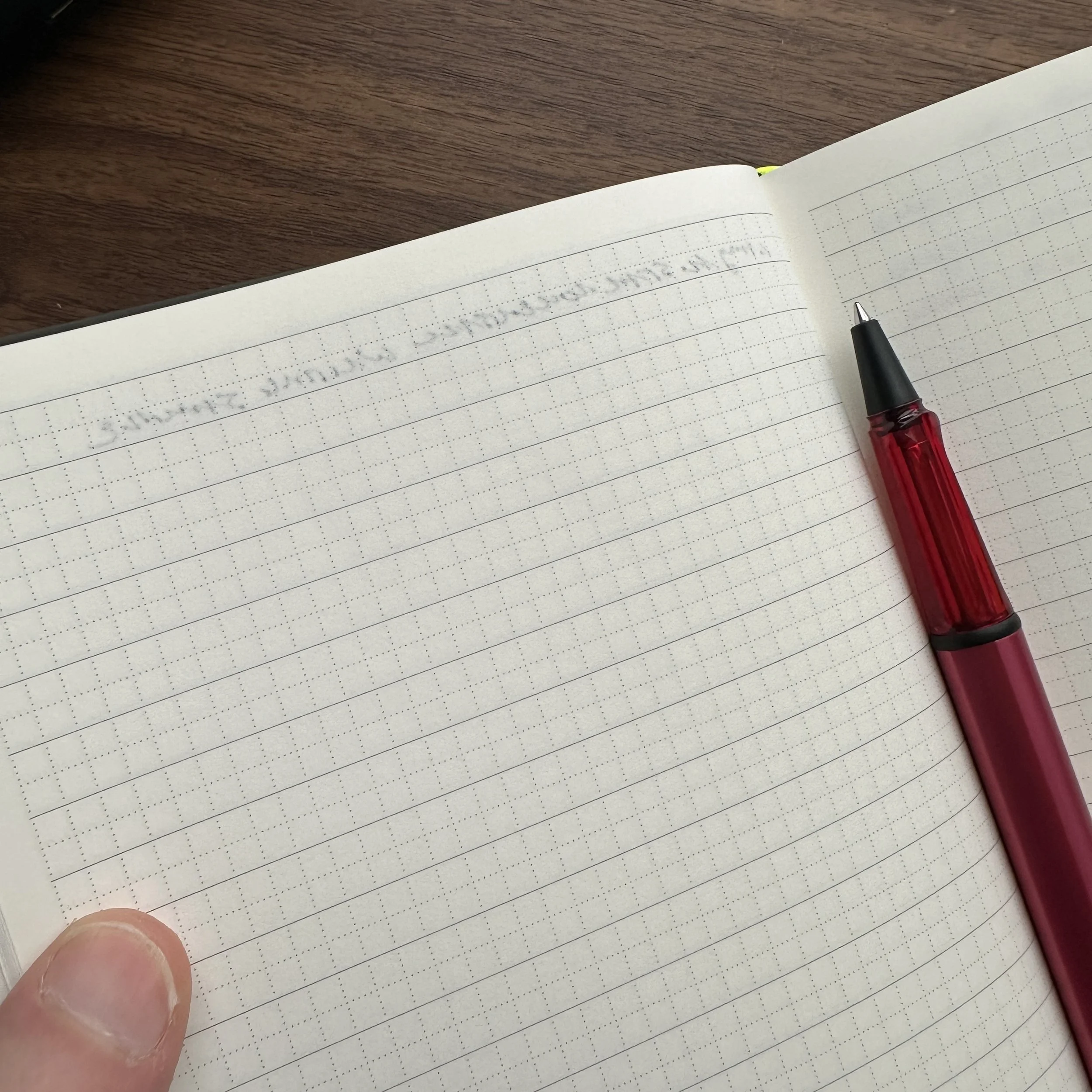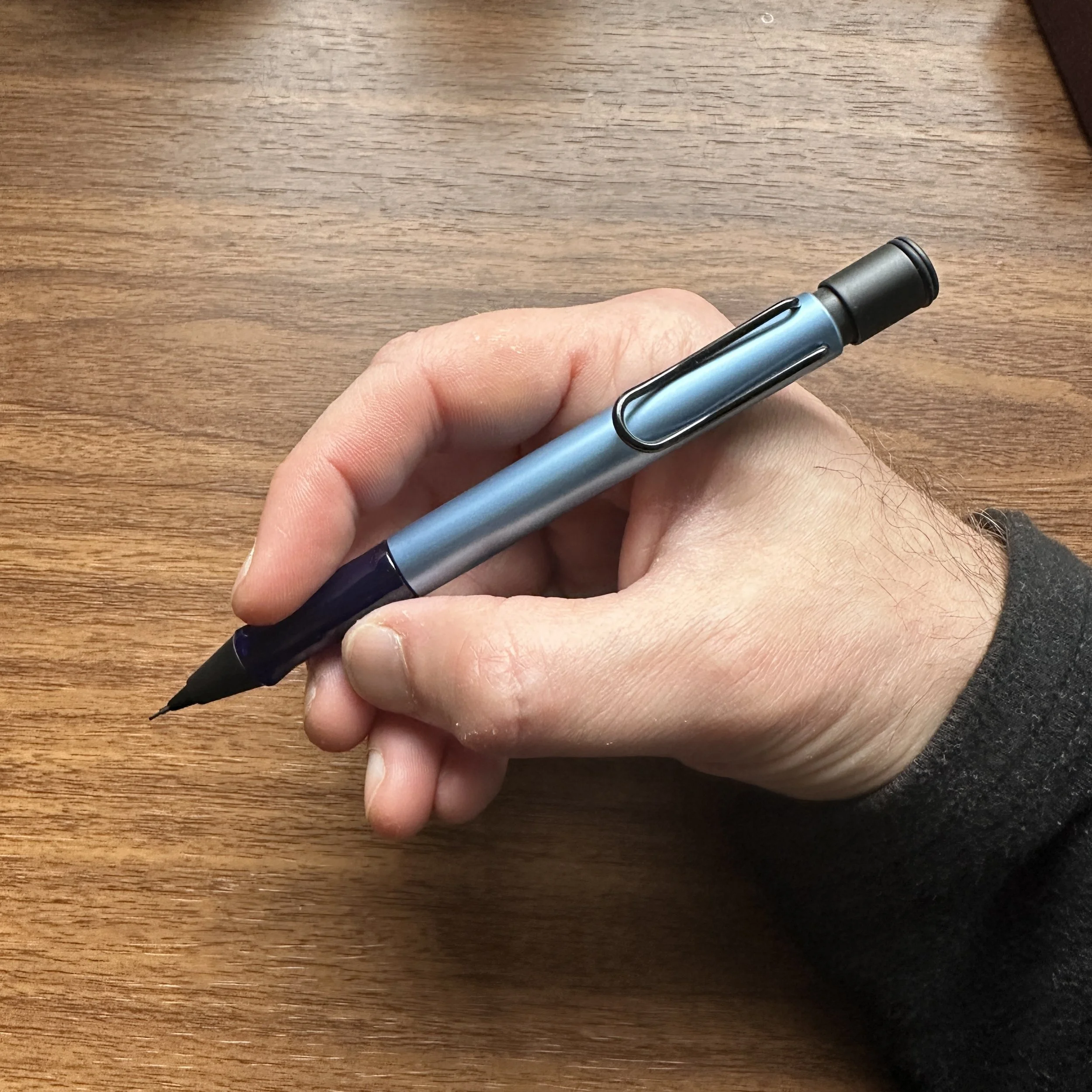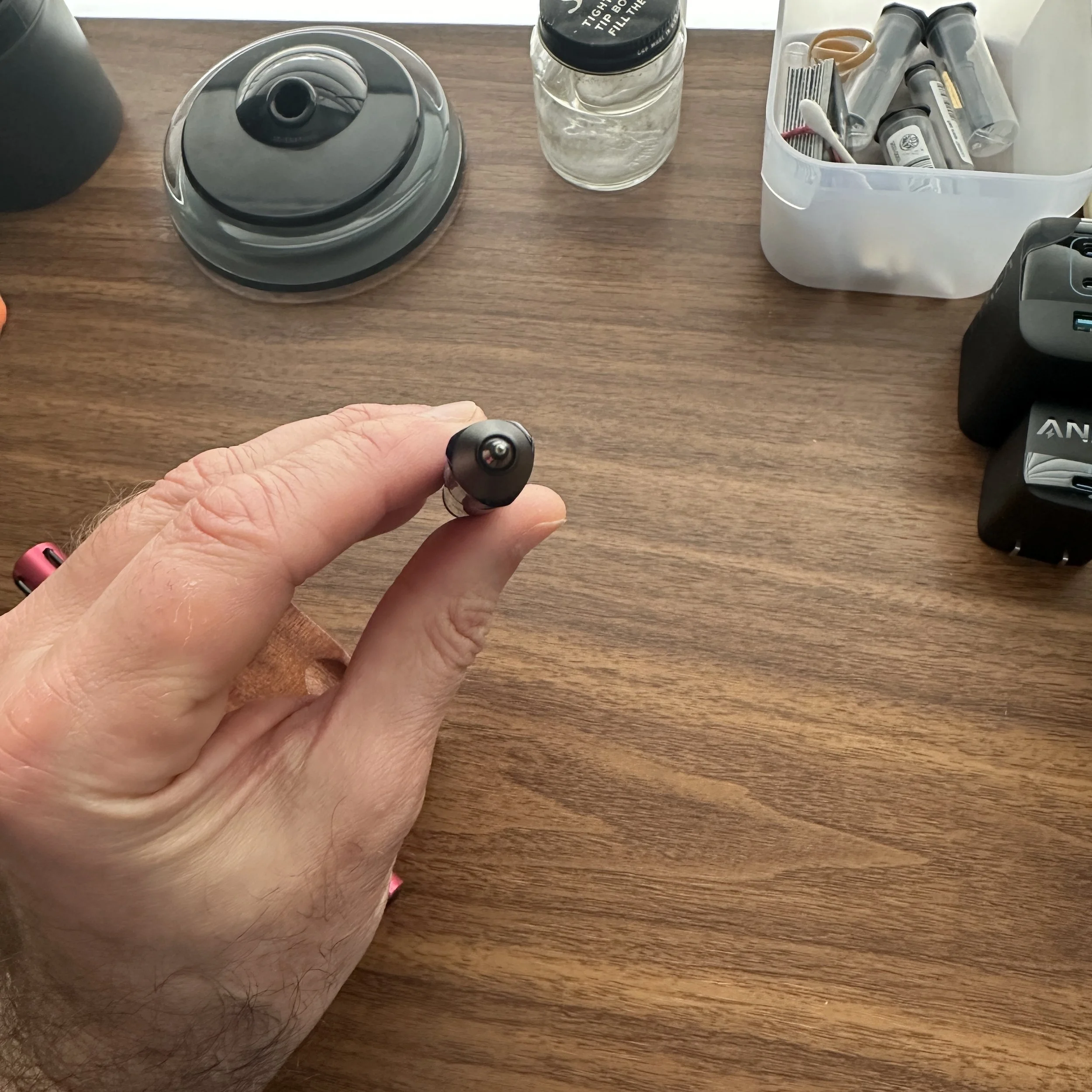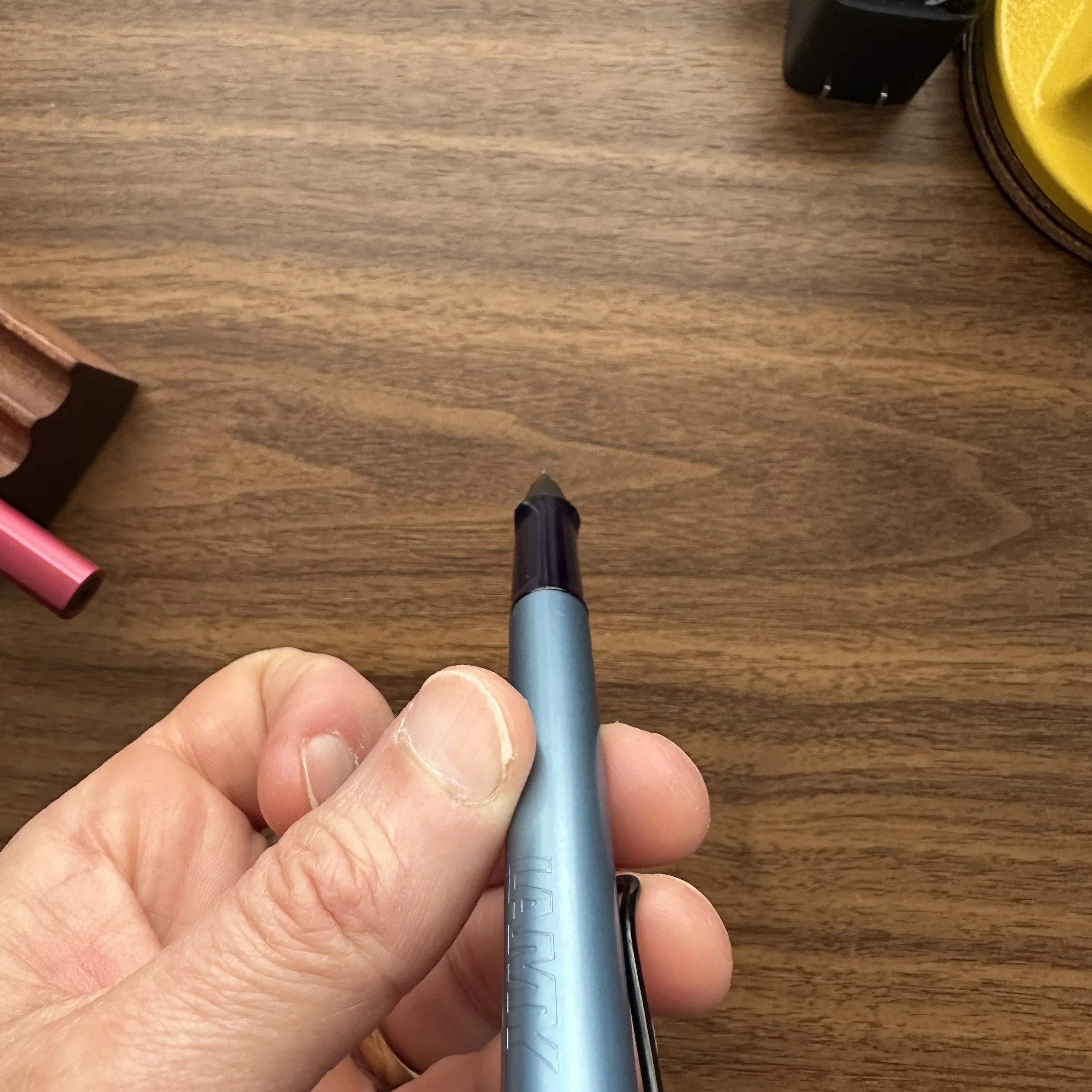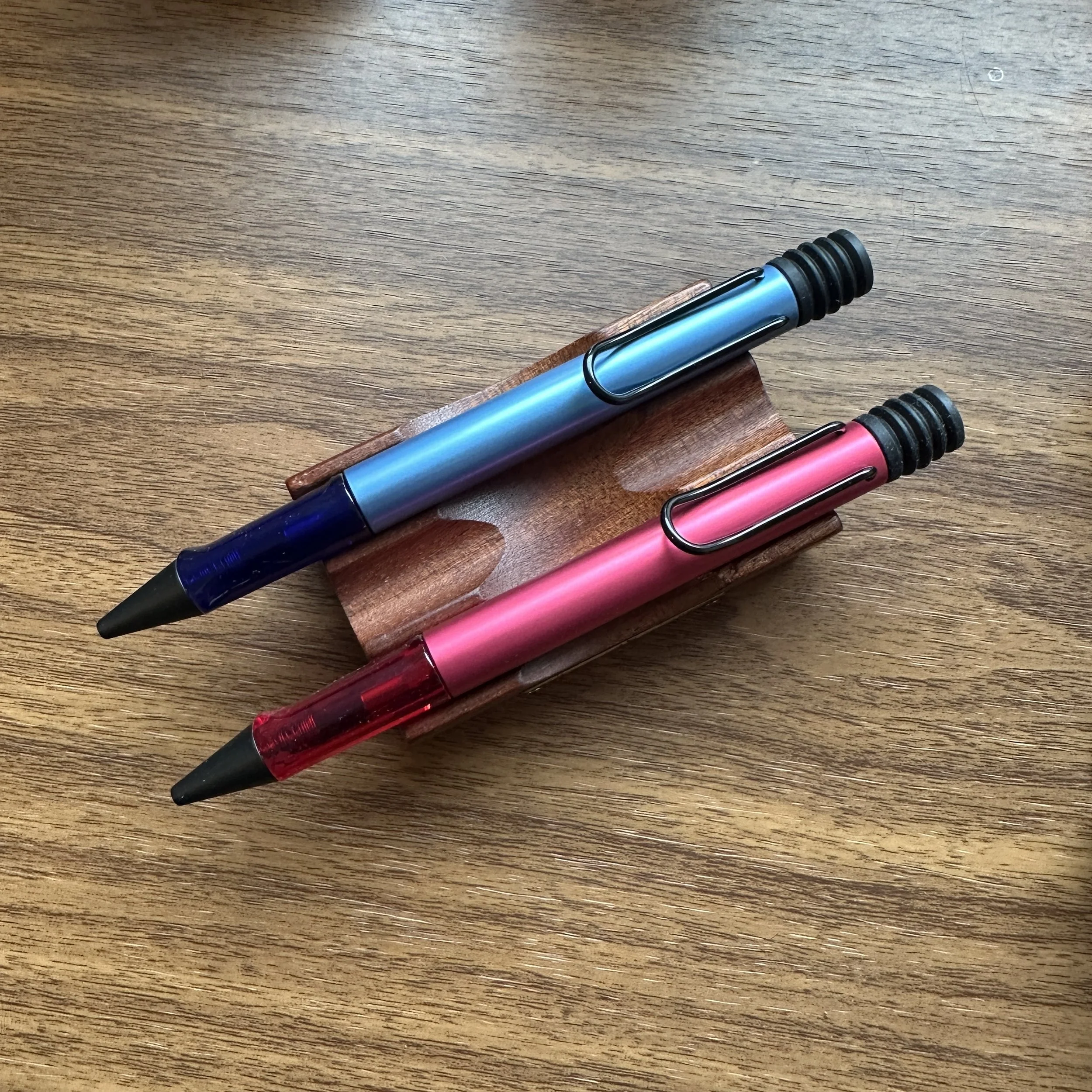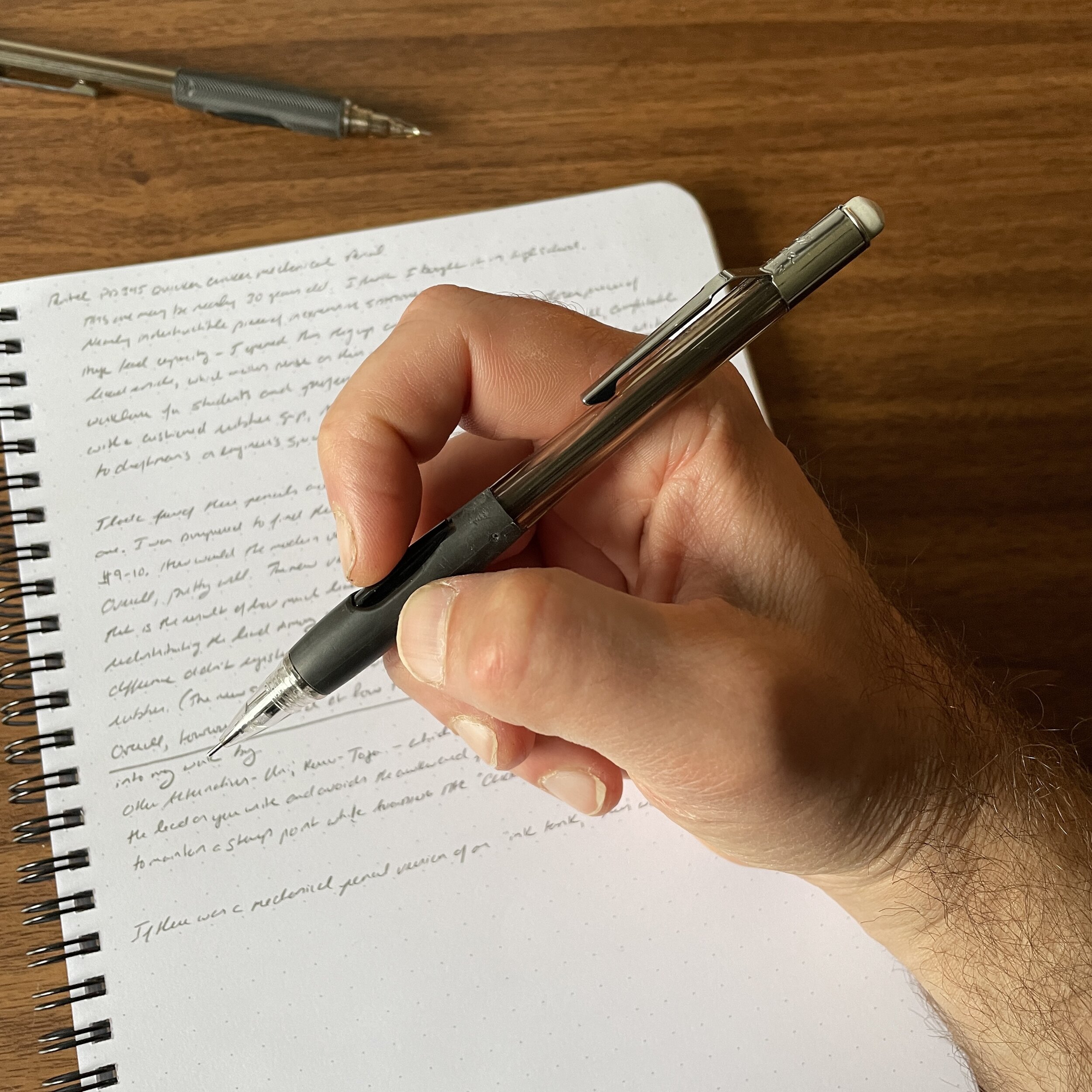To my knowledge, the "capped mechanical pencil" market is mostly divided between two popular options: The Pentel Sharp Kerry and the recently released Kuru Toga Dive. (Yes, I know there are other models out there that feature a cap, but these two get 90% of the mainstream attention.) When I refer to a capped mechanical pencil, it's basically what it sounds like: a traditional mechanical pencil with a pen-style cap that protects the tip when not in use. For those who enjoy writing with a pencil but lament the difficulties of pocket carry, these pencils can offer a level of convenience and usability beyond the bullet pencil (which still requires that you carry a sharpener).
Pentel Sharp Kerry: Excellent Since 1971
You rarely find a piece of stationery that's remained essentially unchanged for more than 50 years. Other examples I can think of off the top of my head would be classics such as the Lamy 2000 or the Pilot Capless/Vanishing Point. Does 50+ years make a pen or pencil "iconic"? In my book, yes. And if the form of this pencil looks familiar to all you fountain pen lovers, that's no coincidence: Pentel designed this pencil to appeal to fountain pen users by offering a design that wouldn't look out of place on their desk or in their pen case alongside more expensive writing instruments. The design is reminiscent of the Pilot Myu or Murex fountain pens from the same era (1970s). For more on the history of the Pentel Sharp Kerry, you can check out this article from the Pen Addict, which originally appeared on Mai-Bun.com.
Practically speaking, I can easily see why the design of the Pentel Sharp Kerry hasn't changed in a half-century. It’s insanely comfortable to use. Posted, the pencil measures 5.25" long, so it sits right in the center of my hand. The long, smooth section accommodates a wide variety of different grips. Best of all, there is a button incorporated into the cap, so when the pen is uncapped and the cap posted on the back, you can still activate the knock. Unlike many technical-style mechanical pencils with their knurled grip and somewhat heavy all-metal construction, the Sharp Kerry feels designed for writing. It's one of the most well-balanced mechanical pencils in my collection, and the absence of a pronounced texture on the grip allows you to write for long sessions without discomfort.
The Pentel Sharp Kerry is designed to be used posted. Evidence? The knock button on the cap can be removed to reveal a Pentel eraser!
I kind of can’t believe I haven’t previously noticed the design similarities between the Pentel Sharp Kerry Mechanical Pencil (left) and the vintage Pilot Myu fountain pen (right).
Hmmm. I’m starting to like it even more.
The Uni Kuru Toga Dive in “Abyss Blue”.
Uni Kuru Toga Dive: Innovative Technology in a “no-Knock” format, But at What Price?
Mechanical pencils often feel like a less-discussed subset of the stationery world, but if you’ve followed the reaction to the announcement, release, discontinuation, and re-release of the Kuru Toga "Dive" over the past two years, you’ll quickly come to realize that there is a significant level of interest. I'm actually not sure that any product release generated as much "controversy" as the Dive, particularly after Uni raised the price in the U.S. by nearly 30%, supposedly to undercut resellers who were buying up stock and reselling the pencils at marked-up rates. I never grasped the logic or strategy here, but I understand that they have since walked it back, and in any event the pencils are not even currently available other than on the secondary market. It will be interesting to see what happens if/when the Dive reappears - and I hope it does, because it’s a really good pencil! For me the question is one of value: do you appreciate the high-tech features, or are you good with a standard Kuru Toga?
The dial allows you to adjust lead length.
So what makes the Kuru Toga Dive special? In addition to Uni's signature Kuru Toga lead rotation mechanism (which maintains a sharp point on the pencil by automatically rotating the lead as you write), the Kuru Toga Dive automatically advances the lead when you uncap the pencil. You rotate the grip in order to set the desired length ("Min," "Mid", or "Max") and the pencil does the rest. I love this kind of innovation, even if I personally prefer to set/control my own lead length manually. (More on that below.)
The cap on the Kuru Toga Dive is magnetic, so it caps and posts securely.
The Dive is a large mechanical pencil. Unlike the Pentel Sharp Kerry, it can easily be used posted or unposted. Some might even consider the Dive unwieldy with the cap posted, but given the plastic/acrylic construction, I didn't find it too heavy and regularly use it this way. (The Dive is actually lighter (.7oz) than the Sharp Kerry (.8oz).) That said, there is one drawback for me: Unlike the Pentel Sharp Kerry, you cannot manually advance the lead via the cap, which I find to be something of an inconvenience if the auto-advance mechanism doesn't keep up or if you have lead breakage. If lead breakage occurs, you have to unpost the pencil in order to hit the knock, as well as to access the eraser.
The eraser on the Kuru Toga Dive can only be accessed by unposting the pen and removing the knock.
Takeaways: Which Do I Prefer?
These two pencils have completely different feature sets, and sit in two wildly different price brackets, so an apples-to-apples comparison is hard. That said, if I had to recommend spending $20 on the Pentel Sharp Kerry or $70-100 on the Uni Kuru Toga Dive (assuming you can find one), I would probably say start with the Kerry simply because (1) it's a classic piece of stationery that has been around for a long time and is an easy addition to our “best pencils” list; and (2) it will give you a good sense of whether this style of mechanical pencil appeals to you. I personally value the Kerry's ability to advance the lead manually when the cap is posted - as noted above, the auto-advance feature on the Kuru-Toga Dive can be convenient, but sometimes doesn’t keep up if you’re a fast writer or write with heavy pressure, and having to unpost the pen to advance more lead can be annoying.
Don't get me wrong, I love my Kuru Toga Dive, and I've actually been trying to get my hands on these for the shop but they've been unavailable to both U.S. and Japanese distributors for much of the past year. Could Uni be in the middle of a redesign? A metal barrel perhaps? We'll see. For now, we do have stock of the Pentel Sharp Kerry in five different colors (blue, green, black, grey, and pink), all in the .5mm tip size. Pentel occasionally releases the Kerry in limited colors, and I plan to try to get these as they become available.
The two pencils featured in this review were purchased with my own funds for my own use. I've owned my green Pentel Sharp Kerry for years, and the Kuru Toga Dive was purchased at Kinokuniya in NYC for around $75 at the time. The Gentleman Stationer is currently supported by purchases from the T.G.S. Curated Shop (including an expansive range of woodcase and mechanical pencils) and pledges via the T.G.S. Patreon Program. If you enjoy our content, please consider supporting us directly!
